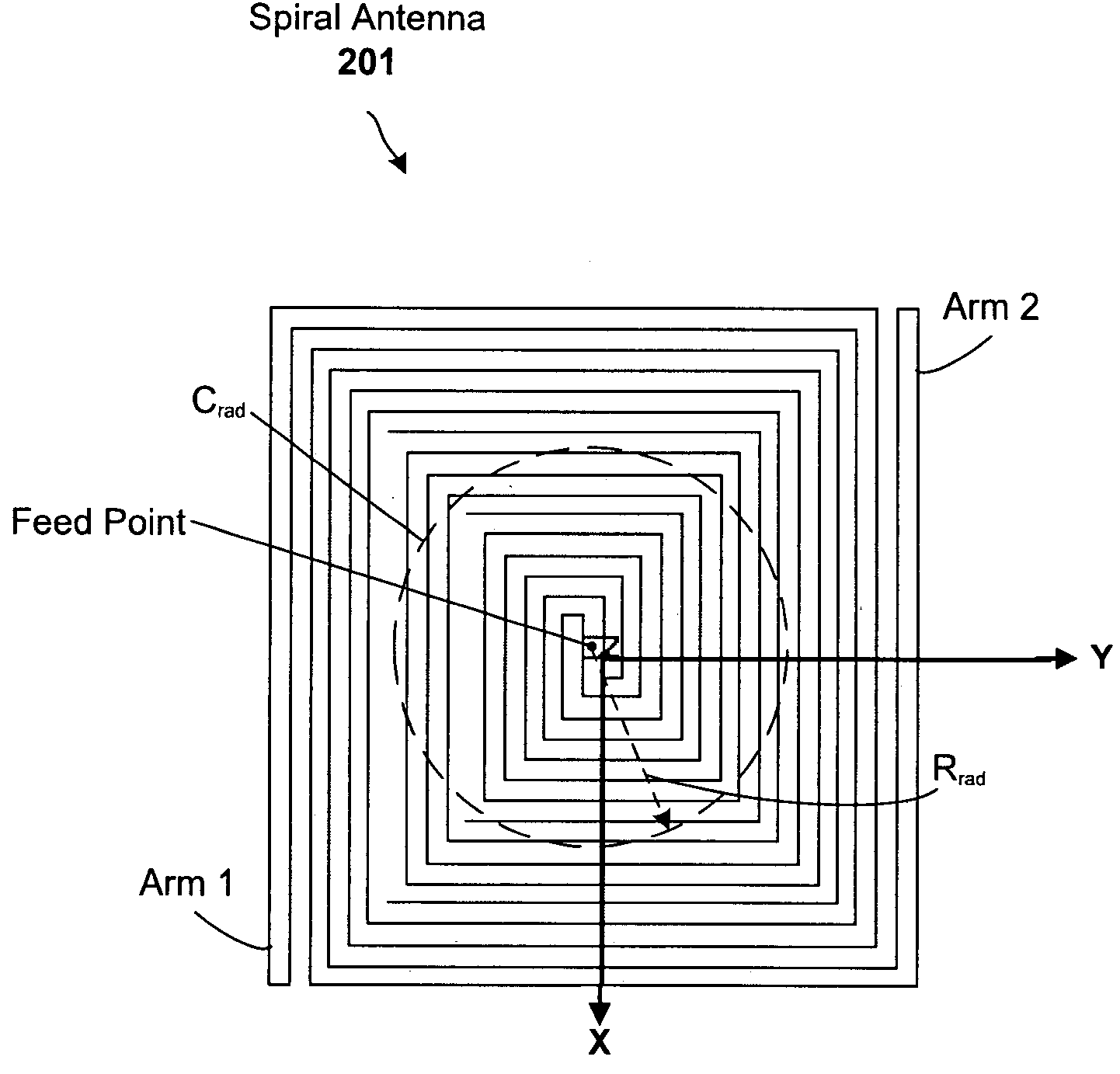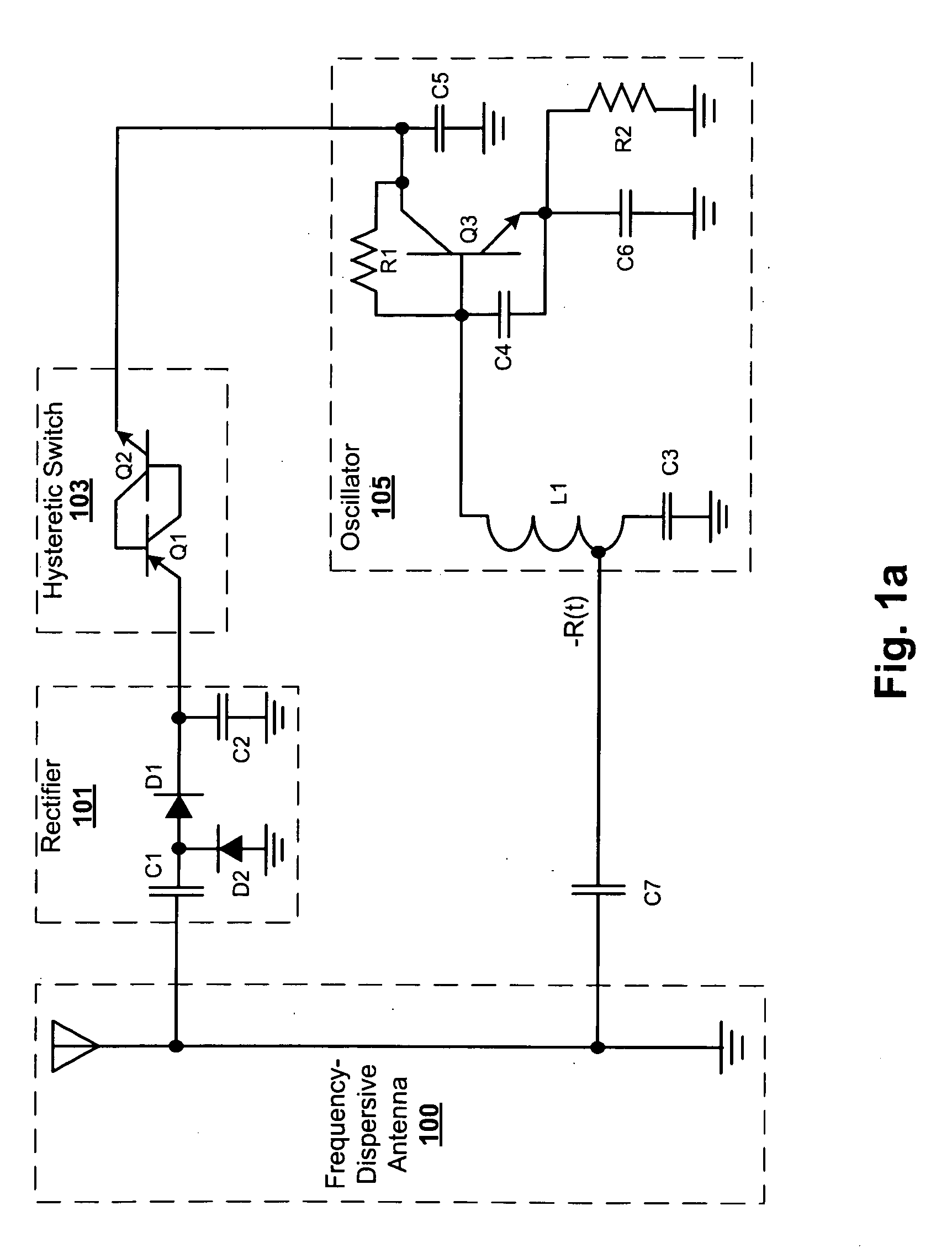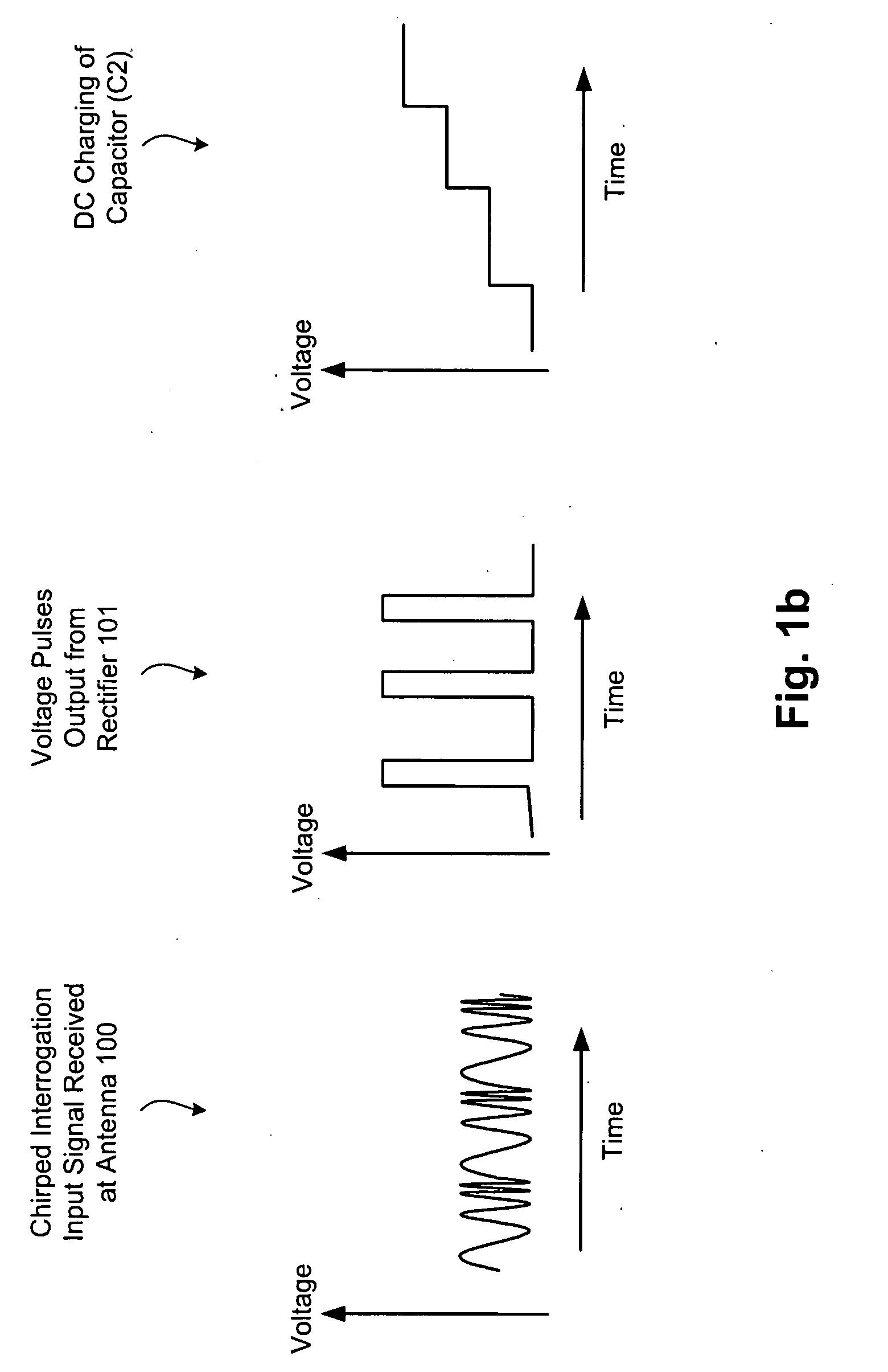Dispersive antenna for RFID tags
a technology of rfid tags and dispersive antennas, applied in the field of transponders, can solve the problems of low sensitivity, low power output of batteryless rfid tags powered by scavenged rf power, and ineffective over longer ranges, and achieve the effect of improving dispersion
- Summary
- Abstract
- Description
- Claims
- Application Information
AI Technical Summary
Benefits of technology
Problems solved by technology
Method used
Image
Examples
Embodiment Construction
[0016]RFID tag designs and sensors are disclosed that include a dispersive antenna and exhibit greater detection ranges relative to conventional designs. The designs can be used to benefit both active and passive RFID tag configurations.
[0017]General Overview
[0018]A passive RFID tag design configured in accordance with an embodiment of the present invention includes a frequency-dispersive antenna operatively coupled to a rectification circuit (sometimes collectively referred to as a rectenna), a hysteretic switch, and an RFID circuit. The rectification circuit operates to convert RF energy collected by the dispersive antenna to DC voltage, multiply that voltage, and store the resulting voltage (in a storage capacitor, which effectively acts as a battery for passive tags). The rectification circuit is configured with component values (including one or more stages of rectification diodes and filter / storage capacitors) selected depending on the frequency band of interest and the amount...
PUM
 Login to View More
Login to View More Abstract
Description
Claims
Application Information
 Login to View More
Login to View More - R&D
- Intellectual Property
- Life Sciences
- Materials
- Tech Scout
- Unparalleled Data Quality
- Higher Quality Content
- 60% Fewer Hallucinations
Browse by: Latest US Patents, China's latest patents, Technical Efficacy Thesaurus, Application Domain, Technology Topic, Popular Technical Reports.
© 2025 PatSnap. All rights reserved.Legal|Privacy policy|Modern Slavery Act Transparency Statement|Sitemap|About US| Contact US: help@patsnap.com



